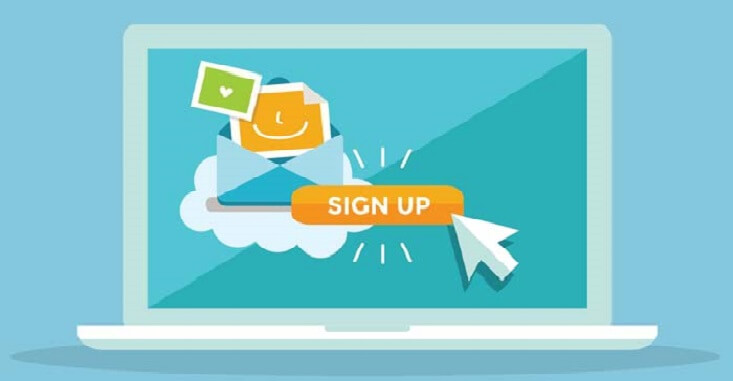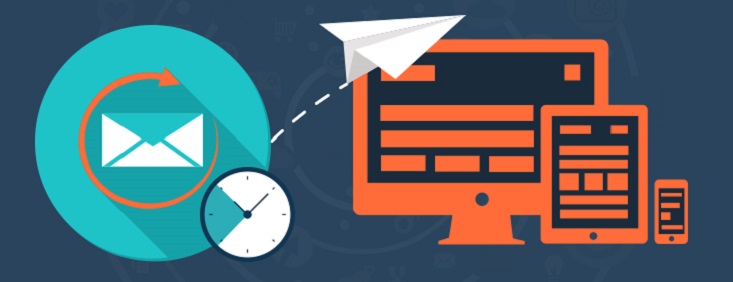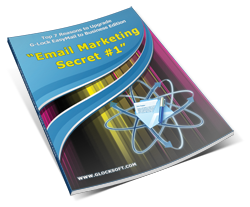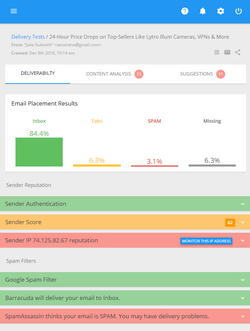Email marketing can be beneficial to your business if you do it right. But if you do it wrong, it will harm your reputation (and your business) a lot. It's quite easy to sketch out a quick email and press "Send". This is exactly what…
How to Build a Steady Flow of Leads and Clients for Your Business Today
Mailing lists are made up of people who have deliberately agreed to receive emails from you to hear more about you, your business, and your products or services.
Having a list of email addresses can be very beneficial for your business. It offers the opportunity to send those people email newsletters informing them about your products, services, special offers, and other stuff which can be a great way for you to increase your sales.
Although it’s not expensive to build and maintain a mailing list, a certain amount of time, persistence, and planning is needed if you want to build a good list and make the most of it.
To make it easy, I broke the process down into an easy 11-step action plan.
1. Don’t Buy a List.

Many people believe that the easiest way to get a list is to buy or harvest email addresses on the Internet and start broadcasting marketing emails to it.
After sending to such a list, they “spray and pray” hoping that someone will click and buy. But all they end up with is angry complaints and spam filtering or blocking issues.
Look:
Sending emails blindly in the hope that someone may be interested is not a good email marketing practice, and it won’t bring you any profit on the long run.
Those people don’t know who you are; either they don’t know anything about your products or services. At best they will delete your email, at worse they will hit “Report Spam” button on it. A certain amount of spam complaints and… voila, your account with an ESP is shut down.
Thus, it’s always more effective to build your mailing list. This way, you’ll collect more relevant people willing to interact with you.
So, what’s the answer? Purchasing or renting an email list is certainly no way to go.
Remember this:
email marketing starts with permission.
Permission is the key factor that determines whether you will succeed or fail. With regards to email marketing, permission is the consent of the recipient to receive emails from the sender.
People give their consent to get your mailings. Your website visitors are your potential recipients. They come to your site, and they like it, and they want to get more information about your products, services, or any other information you can provide.
You just need to provide them with the opportunity to request that information. In other words, you need to give them the option to subscribe to your mailings.
2. Create a Killer Signup Form.

Forms make it EASY to add subscribers to your list. Just put a subscription form on your website at the place where it can be easily found and allow people to subscribe anytime.
The most common place to have the signup form is in the sidebar of your homepage. But to tempt users to subscribe, you can also consider some unusual locations to place your signup form such as:
– Articles. If a reader is interested in your content, they’re more likely to want to read more. Thus, you can put a subscription form in the middle or at the end of the article and give them the ability to subscribe to receive more content from you.
Plus, you can consider using a “content upgrade” tactic when you publish an article partially and request the reader to subscribe to get access to the full post.
– “About Us” page. If someone is interested in your company, they may want to receive updates. A good idea is to give the link to your latest newsletter on the page as a taster before they subscribe.
– Pop-up boxes. Pop-up subscription forms do have merit if they are not annoying. Some email marketers place a pop-up subscription box front and center when a user visits the site. It used to crop suddenly up in front of your eyes while you are viewing the web page. You just can’t miss it. You can either subscribe or quickly close it if you don’t want to signup.
– Blog’s comments. You can use the comment form to build your mailing list. Simply add an option asking the users to tick it if they want to receive your blog updates. The user has already entered their details, so it’s easy to convert them into email subscribers at this step.
– Facebook page. If you can convert some of your social traffic into email recipients, you’ll be in a better position to build a relationship with them.
– Product/service registration. When people subscribe for your service or product trial, you can add an option to join your list and receive useful tips, updates, best practices, tutorials, guides, etc. etc.
3. Provide the Incentive They Can’t Refuse.

A naked signup form is not the best marketing tool. To entice your potential subscribers, provide them with a solid reason to give you their email address. If the reader sees a clear benefit, they’ll be more likely to subscribe.
The way to get ideas for what to give away is by speaking with your existing customers. If you have a support team or happen to be doing support yourself, you already know what questions customers ask and what their biggest challenges are.
Use the received information to create your incentive. Try to focus your incentive at people who will most likely spend money on your products or services in the future.
Explain clearly what people will receive in return for their emails: tips, tricks, news, case studies, special offers, promotions, or whatever you will send them. I.e. give a solid reason to subscribe to your mailing list.
Now:
4. Create an Irresistible Lead Magnet.

In addition to promising things people want, try giving them something for free they can’t resist taking right now. Free offers are the foundation of building your email list.
In the world of email marketing, such free offers are called lead magnets. A lead magnet is an offer of information or material that is provided in exchange for an individual’s contact information. Lead magnets are created for the only purpose of converting website visitors into email leads.
So what lead magnets can you provide and what should they be about? Check the list below for the types of offer you can think of:
– Turn an article into a guide. This is the fastest way to create a lead magnet. If you already have multiple blog posts on your site, you can simply check out Google Analytics and see what’s most popular. Then, all you need to do is to take the top performing article and turn it into a PDF guide, report or e-book.
– Organize tools or resources into an e-book. You can simply organize a list of resources that are related to the subject you are focusing on into a downloadable document. The same way you can create a list of resources: blogs, YouTube videos, articles, books, or anything else. Essentially the resources will help your reader continue their education of the subject matter.
– Provide webinars. People love free educational seminars, that’s why webinars are considered the best performing lead magnet. However they have one downside: they take more time and effort to prepare and implement. Anyway, keep webinars in your mind as they can transform your business.
– Offer the webinar’s summary as a download. If you host a webinar, a written summary is a great addition. You can allow access to the webinar to anyone, but provide its written summary with the key points as a download for an email address. For those visitors who don’t have the time to watch the webinar online, downloading a quick summary can be priceless.
– Create a “How to” video. Download a screen recording tool and show your audience how to accomplish a task they need to deal with. Once you record it, you can make a private YouTube video or upload it on any other video site. Then, create a protected page on WordPress and you’re good to use it as your lead magnet!
In addition to the things above, you can consider other lead magnets such as an exclusive discount, a subscriber-only bonus, a free trial, a free consultation, a contest giveaway, or whatever you think your target audience might want.
5. Dispel Any Doubts.

Unwanted emails are a nightmare. Thus, it’s critical that you reassure the subscriber that you won’t be abusing their Inbox.
When a user signs up to a list, they must know two things:
• You will keep their email address private.
• You will allow them to leave the list any time.
The best way to reassure the subscriber is with the link to your privacy policy page. But you can also add a line like “We will not share your email address with any third party” below the signup form to remove their doubts right now.
With all that said, your signup form should be put at the place where it’s clearly visible, give a solid reason to subscribe, promise an irresistible offer that can take right away, and reassure them with the privacy statement.
6. Make the Process Easy.

You need to make your subscription process as quick and easy as possible in order not to inadvertently push them to walk away.
How do you do that? Think about what information you need to create targeted relevant email campaigns and create a simple process to capture that information.
Do you really need their postal address, job title, date of birth and telephone number? If you don’t really need all that data, don’t ask for it. People are understandably nervous when the form asks for too much personal information.
Carefully integrate your subscription form into your site. The subscription process should be as quick and painless as possible. The user must take just three steps:
1. Complete the form.
2. Press the “Subscribe” button.
3. Confirm the subscription.
That’s all. If a user has to perform too many steps or take too many actions to get their email on the list, you’ll lose most subscribers somewhere in the middle.
7. Be Creative at Getting Subscribers.

Now, when you’ve come up with a beautiful and effective signup form, you can work out new ways to attract people to your form.
The options available to you will depend on the structure of your website, but here are a few you can consider:
– Send the link to your signup page to your existing customers. This is a good way to convert existing clients into email subscribers when your list is just starting to grow.
– Schedule a webinar and ask people to sign up to your list in return for the free access to the webinar.
– Place the signup link at your ordering page and try offering instant discounts to people who sign up to your mailing list while they’re buying.
– Collect email addresses at networking events.
– Promote your email list and incentives on Google AdWords and other pay-per-click advertising websites.
– Post list “teasers” on social media websites. Show the benefits of being on your list, and encourage sharing among your peers.
– Do a cross-promotion with a related company and ask them to promote your list within theirs.
8. Schedule Email Campaigns.

Once you have the subscription process in place and the subscribers are coming, it’s time to think about marketing, and that means creating email campaigns.
This is a challenging aspect in email marketing:
send too much and you risk abusing your subscribers, but if you leave the list freezing, they can forget they signed up with you or lose the interest in your content.
Scheduling email campaigns is the best way to establish a consistent communication channel, and it’s a good way to educate yourself to manage the list you’re building.
Now:
Consider the tips below when creating a marketing email campaign in order to make it as effective a possible:
– Decide how often you will send your updates (daily, weekly or monthly) and stick to your schedule. Consistency is beneficial to both parts. Your subscribers will know when to expect the next email from you. And you will be building your positive reputation with ISPs by sending your campaigns at a regular basis.
– Find the best time and day of the week to send the campaign. Some marketers find that afternoons are more convenient, simply because people used to have less mail to deal with. Depending on your market niche and your subscribers, this may vary.
– Have a goal. Think about what you want to achieve with the email and clearly tell it. Do you want them to read your new post? Download the update? Answer your quick survey? Watch a training video? Try to stick to one call-to-action per email. The research shows that multiple calls to actions within one message don’t perform well.
– Email your best content. If you’ve published content that particularly deserves their attention, your email newsletters offer a great opportunity to promote it to your subscribers.
– Carefully proofread the email to avoid spelling and grammar mistakes. Consider having someone else to read the email before your hit the send button.
– Test the email deliverability. You’ll spend time in vain if your subscribers don’t see your email. Don’t be lazy and test how your email is delivered across different ISPs and whether it is sent to the Inbox or spam box. You can use the GlockApps testing tools to check your email deliverability and spam score.

9. Encourage Referred Subscriptions.

It’s always a good idea to motivate your existing subscribers to give a few shares to your email and forward it to their friends.
While they aren’t a must-have element, the forward to a friend link and links to your social accounts can be a free yet powerful marketing tool.
So, don’t miss the opportunity to give more exposure to your content and populate your list with new users. A personal recommendation from a friend always works well.
10. Don’t Miss the Unsubscribe Link.

While the unsubscribe link is required by CAN-SPAM, it’s also important for building trust.
Without the unsubscribe link, your marketing emails will quickly be sent to the spam folder, and that can cause serious problems for future emails and your own credibility.
Thus, every email marketer, no matter how small or big their list is, needs to give the subscribers a very easy and quick way to unsubscribe.
Here’s the deal:
– Make your unsubscribe link prominent. This in itself is a good way to instill trust and reduce spam complaints.
– Use an instant unsubscribe. There is no sense in making people dig through a dozen of checkboxes or pages to leave the list.
– Ask for a reason for the unsubscribe request. The truth can hurt, but it can also inform you about what you did wrong if anything so you can avoid the same mistakes in the future. You can put a quick box on your unsubscribe page asking the user to tell you why they decided to unsubscribe.
– Handle unsubscribes on time. Have a bounce handling process set up and working. You are not allowed to send emails to those people anymore, so you have to make sure they are removed from your list. Again, a timely handling of unsubscribe requests builds trust in you as a marketer and protects you from serious troubles with ISPs and email service providers.
11. Get a Reputable Email System.

To set up a subscription process and send effective email marketing campaigns to your subscribers, you have to get a reputable, secure email marketing platform to work with.
Email service providers like MailChimp and ConstantContact are popular choices among marketers since they provide all basic features for subscription and marketing. Email service providers suit well for small email lists, but when the list is growing they become rather expensive.
As a cost-effective alternative to email service providers, you can consider a hybrid email system like EasyMail7. It works as a powerful front-end to SMTP servers and delivery services and allows you the full control over your email list, messages, autoresponders and email deliverability.
The most exciting thing is that you can create multiple outgoing email accounts in the hybrid software using different SMTP settings and easily switch the account in case your main SMTP undergoes any outage when you need to send an urgent campaign.
Furthermore, EasyMail7 allows you to set up a subscription process, create an automated email series to promote content to your list, and automatically handle unsubscribe and bounce emails.
Download the free trial of EasyMail7 and give it a try yourself to see how it helps you create and deliver awesome personalized emails to your subscribers and quickly build fully-customizable drip campaigns for all your needs.
What’s the Bottom Line?
Email marketing is an easy, cheap, and effective way to build engagement and take your business to a higher level. And building a healthy email list should be one of the key elements of your email marketing.
When working out your email marketing strategy, keep in mind this quick plan:
1. Put the subscription form with a good incentive on your site.
2. Try different ways to drive readers to your subscription form.
3. Get a reputable email system.
4. Schedule email newsletters with valuable content.
5. Set up a quick and easy unsubscribe process.
6. Handle bounce and unsubscribe emails timely.
Tags: Free Bulk Email




Cassandra
| #
The most important thing is that site where are to place your opt-in page is of high quality content on order to get the most targeted market as possible. This will surely get you a list of highly potential customers that are most likely to sign up to your opt-in page. Getting the most out of your arsenals in SEO will surely get your content on the highest page ranks as well where more potential clients are easier to bait.
Taylor
| #
I’ve found giveaways are a good way to build up your email list. This gives incentives for people to willing give you their email in exchange for a chance at winning something. Also searching forums related to your niche is a good way to find people who are interested in what you are selling.
JS
| #
Incentivizing or at very least conveying the benefit of joing your list is critical. ”On exit’ style popups can increase subscriptions (in addition to simple sidebar integration.) Coregistration services like coRegMedia.com can also help to grow you r email list.
Jerry
| #
I would make sure that if your collecting people’s email’s you let them know what you are going to use it for and give them the option to opt out if they desire.